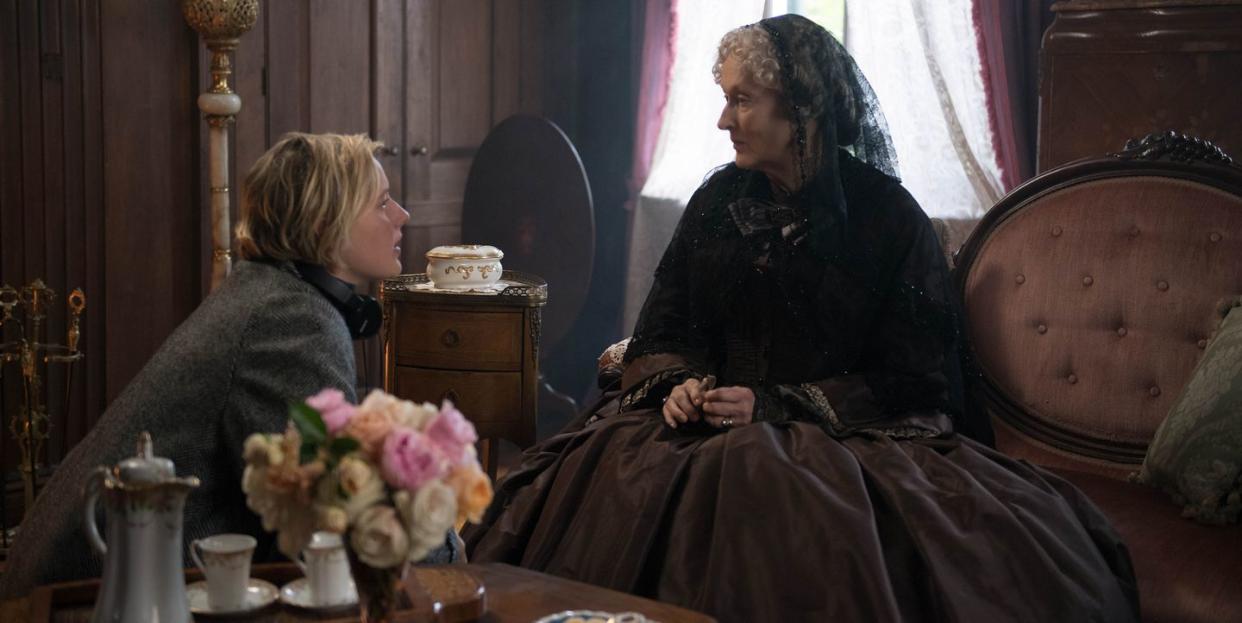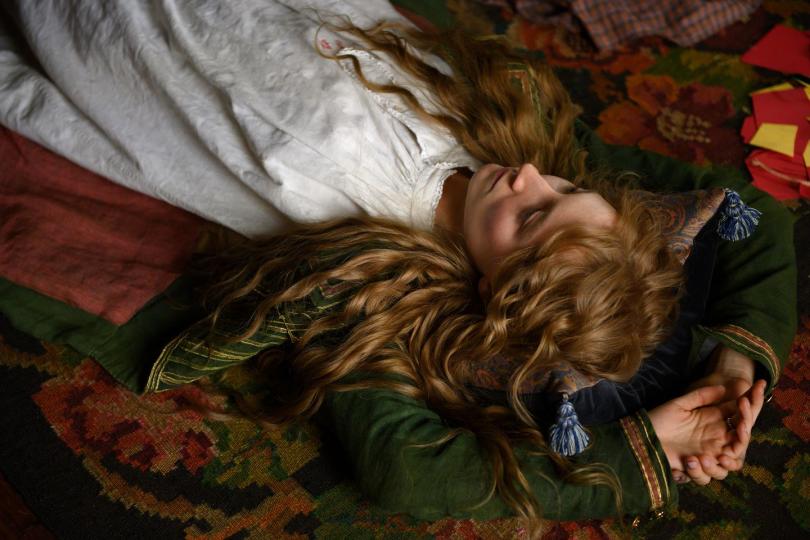Greta Gerwig's 'Little Women' Is a Love Letter to Its Author

Greta Gerwig’s Little Women came out in theaters on Christmas Day to overwhelmingly positive reviews and a resurgence of fans who want to emulate the lives and sartorial style of the March sisters. But influential modern writers including Nora Ephron and Joyce Carol Oates have been inspired by the second-oldest March girl, Jo, for decades. She’s an independent thinker, an early feminist, and a courageous writer who doesn’t want her life or work controlled by a man. In the 12 made-for-TV adaptations and six films, we’ve seen Jo March come alive onscreen, portrayed as the same strong-willed, passionate young woman that readers originally met in Louisa May Alcott’s 1868 novel.
Through actress Saoirse Ronan’s performance, Gerwig’s adaptation reintroduces fans to the same Jo March we’ve always known and loved. But this time, there’s something a little different about her—she encompasses both Jo March and Louisa May Alcott. As Slate noted in December, Gerwig’s movie is a “poioumenon,” which is a story about a work of art being made—or metafiction. The movie itself, nominated for Best Picture at the Academy Awards tonight, is about the writing of Little Women and essentially blends Alcott’s and Jo’s narratives into one.
Gerwig wove Alcott’s own story into that of the March family with small details that some audience members might not have noticed on first watch. The movie is, in effect, a love letter to Louisa May Alcott, who Gerwig credits as her true inspiration as a woman and writer.
“As a child, my hero was Jo March,” Gerwig told The New York Times. “But as an adult, it’s Louisa May Alcott.”

Gerwig's Little Women opens with a quote from Alcott.
The film opens with a quote from Alcott that reads “I [have] had lots of troubles; so I write jolly tales.” Gerwig's choice to include Alcott’s voice from the beginning immediately inserts the author into the narrative of the film.
Alcott’s childhood was a lot like Jo March’s.
Like the March family, the Alcotts eventually settled in Concord, Massachusetts after moving dozens of times in New England. Like Jo, Alcott was the second daughter in her family, and she also had three sisters: Anna, Elizabeth, and Abigail. The family was friendly with influential writers, such as Ralph Waldo Emerson and Nathanial Hawthorne, who instructed Alcott in her writing early on. As far as male influences, Jo has Mr. Laurence, her kind, wealthy neighbor who takes care of her, her mother, and sisters while their father is away during the Civil War.
The author’s poverty made her a more determined writer.
While doing press for this film, Gerwig noted that the March family lived in “genteel” poverty, much like the Bennets of Jane Austen’s Pride and Prejudice. But the Alcotts, Gerwig said, “were wretchedly poor.” Alcott worked several jobs, including as a seamstress, maid, teacher, and governess. When she got home at night, she’d write until her hand got so tired, she’d switch to keep writing. As Amanda Hess notes in the Times, Gerwig made Jo ambidextrous as an homage to Alcott.
Alcott wrote Jo March’s romantic ending (her marriage to the German professor) out of spite, and Gerwig was sure to add that detail into the movie.
“Jo should have remained a literary spinster,” Alcott wrote to a friend, per the New York Times, but she felt pressured to satisfy her readers. “I didn’t dare refuse and out of perversity went and made a funny match for her.” Jo’s marriage, which was originally written in the back half of the book in a sequel called Good Wives, was written because readers in the 1860s could not understand that a woman wouldn’t marry. In real life, Alcott herself never married.
At the end of Gerwig’s film, Jo tries to make the case that her heroine shouldn’t marry. Her editor, Mr. Dashwood (Tracy Letts), pushes back, arguing that fans will want to see the heroine with a husband. This context from Alcott’s life allowed Jo’s marriage to the professor, Friedrich “Fritz” Bhaer at the end of the movie, to take on more dimension. The character—and Alcott—didn’t necessarily want marriage, but as the film makes clear, life as a single woman in those days was considered to be an incredibly lonely existence.
Gerwig layered Jo and Louisa’s stories in a way that brings out her own voice as a writer.
In an interview with the Writer’s Guild of America East, Gerwig told reporter Katilin Fontana it was important to draw out that connection between Alcott and her heroine, Jo. "I wanted to create something that was, in some ways, a collapsing of Louisa May Alcott the author, and Jo March, who was her avatar in some ways.”
In the interview, Fontana adds that she sees Gerwig’s own narrative as an ambitious female writer as an additional layer to the story. “Yeah, I know. It’s very Cubist what’s going on,” Gerwig responded. She later referenced the early influence Jo March had on her life. “It’s hard to say now if I was like Jo, and that’s why I connected with her, or if I liked Jo and then I made myself like Jo.”
You Might Also Like